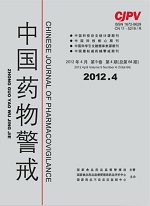|
|
Study on the Toxicity and Side-effects Accompanied with Analgesic Effect of Different Components from Folium Artemisiae Argyi in Mice
WANG Hui, HUANG Wei, CHI Xue-jie, ZHANG Ya-nan, SUN Rong
2012, 9(4):
193-197.
Objective To determine the material basis of the volatile oil and water extracts from Folium Artemisia Argyi, the effective dose range and time range as well as the dose range and the time window occurred with side effects, to lock the target organ of toxicity, in order to provide the experimental data for clinical safety. MethodsAnalgesic effect of the volatile oil and water extracts from Folium Artemisia Argyi were investigated by hot plate test and acetic acid writhing test in mice. The symptoms of mice were observed, the ratios of liver and kidney were calculated, and the levels of ALT, AST, BUN and Cr in blood were detected, for the purpose of inspecting the side effects of the volatile oil and water extracts. ResultsThere were significant differences in the value of hot-plate pain threshold and frequency of the writhing test of each dose group after 1、3 、7 days administration to mice, and there were certain time and dosage dependence relationships, and the analgesic effect of water extracts components was stronger than volatile oil. The indexes detection in serum showed that different dosage group had different increase in the level of ALT、AST、Cr、BUN and the ratio of liver and kidney, and there were certain time and dosage dependence relationships, and the toxicity of volatile oil was stronger than water extracts components. ConclusionThe volatile oil and water extracts from Folium Artemisia Argyi showed certain effect of analgesia, the effective range of analgesia were respectively(34.5 g·kg-1~138 g·kg-1) and (1.17 g·kg-1~4.68 g·kg-1), and showed certain dose-effect and time-effect relationship, and calculated by equivalent amount of crude drug, the analgesic effect of volatile oil was stronger than water extracts components. The side-effects accompanied with analgesic effect were liver function, renal function and viscera indexs, the hepatotoxical injury in particular. The dose ranges of the volatile oil and water extracts produced liver toxicity were(34.5 g·kg-1~138 g·kg-1) and(2.34 g·kg-1~4.68 g·kg-1), it showed certain dose-dependent and time-dependent relationship; while the dose ranges of the volatile oil and water extraction component produced kidney toxicity were(69.0 g·kg-1~138 g·kg-1) and (2.34 g·kg-1~4.68 g·kg-1). At present the Pharmacopoeia recommends that the amount of Folium Artemisia Argyi is 3-9g; as there has been hepatotoxicity and renaltoxicity when the animals were administrated for 7 days, which should be attended in clinical application.
References |
Related Articles |
Metrics
|
